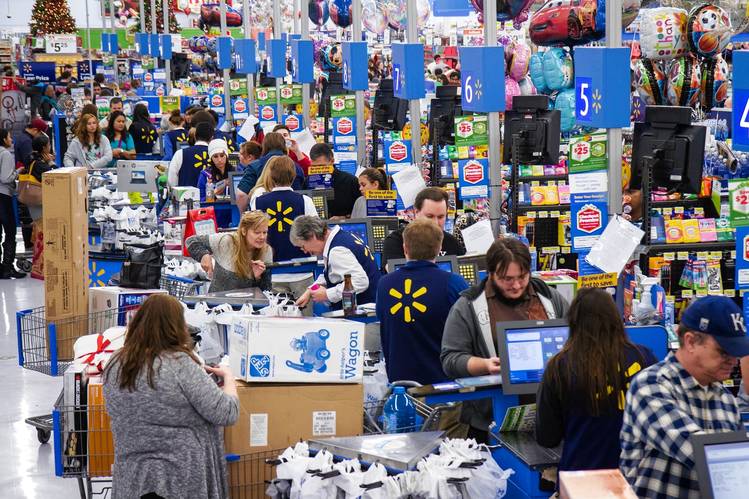Taking care of customers by taking care of employees, Part 2
A few months ago I shared on the blog some details about fast-food giant McDonald's recent improvements in both same store sales, customer satisfaction, and customer service, (think shorter wait times in the drive thru), that were largely attributed by McDonald's CEO to a series of comprehensive hourly wage increases for thousands of front-line staff.
For a quick refresher on that story, here is part of what I wrote back in March:
What if there was another, simpler way to improve customer service that didn't involve 'engagement' at all, but did impact those employees that are on the front-line working with and helping customers every day? You'd be interested in something like that, wouldn't you? What if it was as simple as cutting a check? Well, make that several thousand checks.
Check this excerpt from a recent Fortune piece - McDonald's Says its Wage Hikes Are Improving Service:
The hamburger chain in April announced it would raise the average hourly rate for workers at the U.S. restaurants it owns to $9.90 from $9.01 starting July 2015, with average wages climbing above $10 per hour by the end of 2016. The company also said it would allow those employees to earn up to five days of paid vacation every year following one year of employment.
McDonald’s CEO Steve Easterbrook, who took the helm in 2015, has since moved swiftly, closing hundreds of weak stores, bringing back all-day breakfast, and simplifying the chain’s menu, reducing bottlenecks in serving customers quickly.But improving the customer experience hinges on workers being on board with all these changes, hence the raises.
“It has done what we expected it to—90 day turnover rates are down, our survey scores are up—we have more staff in restaurants,” McDonald’s U.S. president Mike Andres told analysts at a UBS conference on Wednesday. “So far we’re pleased with it—it was a significant investment obviously but it’s working well.”
In October, McDonald’s reported its first quarter of comparable sales gains in two years. The company built on that growth with a huge 5.7% increase in the following quarter.
Wow, is it that simple? A general 10% across the board wage increase and sales and customer service both rise enough to offset the costs of the increased wages? That's it? Man, what took them so long to sort that out?
That was McDonald's story back in March, and if you read the entirety of the piece, you will see that I acknowledge that there were probably some other, and possibly significant factors at play that likely also contributed to the uptick in sales and improvement in customer metrics. But there can be little doubt that the wage increase had an effect as well, and I would argue, the most pronounced effect.
Let's fast forward to earlier this week where Business Insider shared some details of another massive retailer taking a page from the McDonald's (as well as the Costco) playbook of increasing wages and improving training, and perhaps most importantly, concentrating on employee scheduling, (and not just to 'optimize' staffing levels) - none other than Walmart. What have been some of the effects of wage increases and overall heightened investments in people at America's largest retailer?
From the Business Insider piece:
Walmart is becoming a better place to shop because it started paying employees more.
For many years, the company was plagued by widespread complaints about poor customer service at its stores.
That was until last year when Walmart, under pressure from investors following several quarters of same-store sales declines, decided to invest billions of dollars in wage increases and training for workers.
Specifically, Walmart committed to investing $2.7 billion over two years in higher wages, scheduling improvements, and employee training, following in the footsteps of companies like Costco.
Walmart's efforts so far have translated into a pay raise of about 16% to $13.69 per hour for non-managerial full-time employees, The New York Times reports.
In the meantime, widespread issues in Walmart stores such as empty shelves and cleanliness have significantly improved.Three out of four Walmart stores now meet the company's own customer service standards, according to the Times. A couple years ago, just 16% of its stores met those goals.
It turns out that paying people more may have made them better employees.
The piece goes on to mention, (like in the McDonald's situation), some possible other reasons for the improved results, and some alternative motivations for Walmart to make these investments in their workforce, but as in the McDonald's case, Walmart's leaders see a clear line between taking better care of employees and taking better care of customers, (and driving better top and bottom line results).
I think after these two cases, you get the idea of where I am going with this. I will end this piece with the same couple of thoughts I used to end the March piece on McDonald's:
Sometimes, maybe most of the time, we tend to over think what it takes to keep people (reasonably) happy, and give them a situation where they feel good about the work they are doing, and the customers that they are serving.
You might not be able (nor necessarily should you), give everyone on the staff a 10% bump. But there probably is some other, simple, reachable change you can make that would serve the same purpose. It's out there. You can find it.
Just don't call it "employee engagement" and you will be fine.
Have a great day, and if you hit up a McDonald's or a Walmart today, let me know how it goes.

 Steve
Steve
